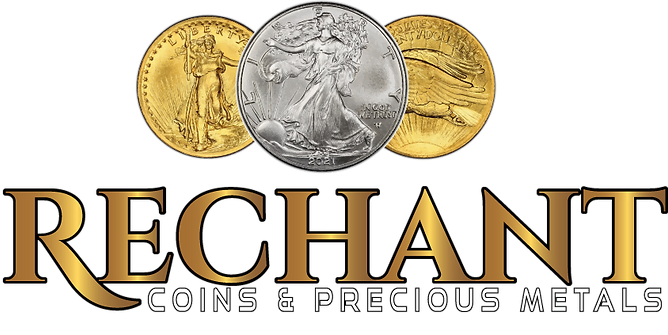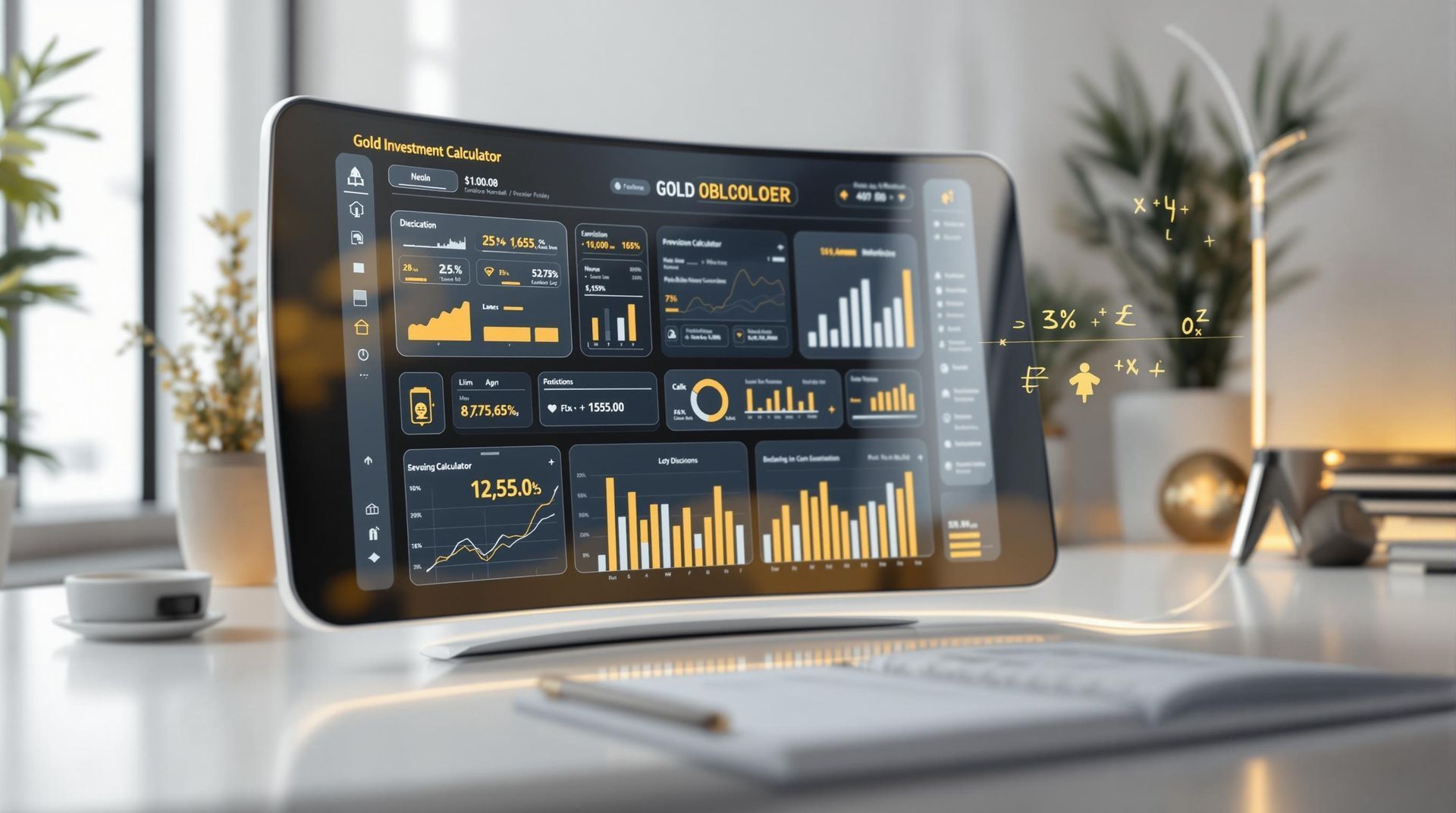Gold Investment Returns - 2024 A Golden Epoch
As we inch past the midpoint of 2024, the lucrative prospect of investing in the gleaming and enduring precious metal, gold, appears increasingly attractive. With the backdrop of economic uncertainties and volatilities, the security and profitability offered by this resilient asset are hard to ignore.
A prime partner for investors looking to venture into this sector is West Palm Beach-based Rechant Precious Metals.
The esteemed coin and bullion dealer has carved an indomitable presence since 1975, offering high-quality bullion and exclusive collectible coins at competitive prices.
The financial landscape's continuous ebb and flow don't seem to deter the positive returns gold consistently yields. There's good reason to believe the 2nd half of 2024 will be no different.
Click here to learn more about: for sale now
The Influences on Gold Prices
The elements that determine the change in gold’s valuation are multifaceted, closely linked, and overlapping. For instance, inflation rates often move in parallel with gold prices. During periods of high inflation, demand for gold usually skyrockets.
This relationship dates back to a historic practice where investors would leverage gold as a hedge in times of economic uncertainty. Moreover, disruption caused by geopolitical unrest often shapes the value of this precious commodity, further reinforcing its reputation as a safe investment during turbulent times.
Gold’s Various Forms and Their Impact
The complex interaction of gold in different forms – such as exchange-traded funds (ETFs), bonds, or coins – impact the economy of the United States. They act as an effective counterbalance against stock market volatility, recession, and shocks from the COVID-19 pandemic. Central banks, insurance companies, and even individual investors are all turning to gold. This steady influx into the gold market aids as a diversification strategy, stimulating demand and supporting the value of the United States dollar.
Understanding the Gold Price Trends
A comprehensive understanding of how these multifaceted factors and gold price trends interact can provide the investor with beneficial insights. Properly navigating these complexities might lead to a wise and lucrative investment decision in 2024.
The Impact of 2024 Projections on Gold as an Investment
Delving into the exciting realm of predictive analysis, the importance of forecasting in the mesmerizing domain of gold investment becomes clear. The metal's value, acting as a financial shield during turbulence like the 2007–2008 financial disaster or the recent COVID-19 pandemic, is deeply interconnected with impending market trends and patterns of economic growth.
Gold has demonstrated its abilities to offer balance in periods of economic upheaval, maintaining not only its allure as an asset class but also its potential as a hedge against inflation and shifts in value resulting from the actions of the Federal Reserve.
Steering Gold Investments with Projections: Imagine heading into unfamiliar territory without a map - that parallels investing without trustworthy forecasting. This analogy becomes even more apt in the context of this precious metal. Let's consider the gold price projection for 2024.
This future estimation serves twofold purpose - directing present investment decisions and revealing possible forthcoming trends. The importance of this relationship between projections and investing in gold was readily apparent in the global reaction to the COVID-19 pandemic. With weakening of the dollar, many parties, from central banks and insurance firms to wealthy individuals and novice investors, redirected their investments towards gold and associated assets. This pattern resembles the behavior discerned during the 2007–2008 economic downturn, further highlighting gold's stability in the face of market volatility and periods of economic instability.
Key Insights on Gold Investments and Projections
- During fiscal catastrophes like the 2007–2008 economic disaster or COVID-19 pandemic, gold fortified its position as a shield.
- Investing without sound forecasting is like a trekker trying to navigate an unfamiliar landscape, a situation particularly relevant to gold investments.
- The 2024 gold price forecast is an important tool, guiding current decisions while shedding light on potential future trends.
- Throughout the COVID-19 crisis, the decrease of the dollar's strength instigated a redirection of investments towards gold and relevant assets, underlining gold's inherent stability amidst stock market volatility and times of economic turbulence.
Long-Term Investment Strategies With Gold
Understanding Gold Price Dynamics for Profitable Investment
Deep understanding of gold price dynamics and the factors affecting it forms the foundation of a successful long-term investment in gold. It is important to consider the intrinsic value that asset classes like gold provide. Gold as an investment has shown excellent performance as a hedge against inflation and solid economic safeguards amidst economic uncertainty.
Paying attention to the current financial climate and its impact on the price of gold is crucial - an understanding we've built on in previous sections. As we transition into the 2023 financial year, various macroeconomic indicators leave a significant mark on the gold market. Tracking these indicators and understanding their potential impact on your gold investment is vital in this process.
Keeping up with Economic Events and their Impact on Gold
Being aware of upcoming economic events is equally important. Understanding these events and their potential influence on gold prices is indispensable in defining your investment game plan. Investment schemes should adapt to changing market (economics) conditions, impacting gold demand, and the gold price.
During a bullish stock market, gold as an investment's appeal may lessen, while a bearish market typically signifies that demand for gold spikes. Adjusting your investment strategy to align with these trends offers the opportunity to capitalize on the financial value of physical gold and possibly earn from gold ETFs.
Planning for 2023 and 2024 with the World Gold Council Guidelines
This will position you favorably for the forthcoming years, including 2024 and the projected 2025, adhering to the advice of the World Gold Council and principles of the gold standard. This diversification (finance) strategy can serve as a stable defense against market instability and economic uncertainty common in the current climate, further strengthening your portfolio for potential future challenges.
Diversifying Your Portfolio With Precious Metals
Investors, curious about the dynamics of the gold price and financial events, place importance on a key component of a balanced portfolio: precious metals. The charm of precious metals remains unrivaled across a wide range of asset classes and investors around the globe consistently experience the rewarding prospects of this type of Investment.
Precious metals, skillfully managed, provide a firm defense against investment risks. A traditional way of reducing potential losses, if a particular sector underperforms, is through the disciplined distribution of investments across multiple asset classes.
With numerous asset classes available, precious metals like gold, silver, platinum, and palladium stand unchallenged in their appeal.
Adding gold, resulting in Gold as an investment, to financial planning gives exceptional stability to a portfolio. This strategy protects it from unexpected market changes as gold price can often serve as a Hedge (finance) in such scenarios.
The inherent value of precious metals, especially gold, remains steadfast, proving its worth as a smart investment. Drawing on an in-depth understanding of the historical trends of these asset classes, including gold, unveils attractive insights.
Gold becomes the focus of investors wanting to expand their portfolio; the average annual return provides a look into the longstanding value of gold. Consequently, a significant number of people are motivated to buy gold and secure physical gold, despite fluctuating gold spot prices and uncertain gold mining opportunities. In all of this, the potential rate of return and stability gold offers in the face of these changes play an important part.
Significant Aspects of Precious Metals as Investment Assets
- Precious metals such as gold, silver, platinum, and palladium are preferred options for achieving portfolio Diversification (finance).
- Diversifying a portfolio via precious metals is an effective measure in investment risk management. It offers stability in the face of Market (economics) changes.
- The consistent stability of the inherent value of precious metals, primarily gold, earns it a commendable reputation as a financial venture.
- A careful review of historical performance trends of precious metals grants investors substantial insights for making long-term investment decisions.
Effect of Market Trends on Gold Price
Investors who hold gold, such as gold bullion and gold coins, often find the complex relationship between market trends and gold prices a key to fruitful investment over the long term. Comprehending this intricate linkage can stimulate informed decisions, turning gold into a profitable, long-term investment.
Embarking on this quest for understanding begins with an in-depth look at vital market trends and their potential to influence gold's performance. Economic cycles, for instance, have a significant impact on the value of gold.
Inflation spikes may motivate gold investors to diversify their holdings, resulting in a rise in the gold price. On a wider scale, worldwide geopolitical events, like wars or elections, can stir up uncertainty. Such instability often leads investors towards gold, considered a stable store of value during turbulent times.
This increased demand for gold can trigger a rise in its prices. Technological advancements and modernizations can also prompt price changes, affecting both gold coins and bullion. Even minor shifts in gold's performance can have a significant effect on the average annual return of gold. This might inspire gold investors to expand their portfolio into mutual funds, stocks, and bonds, including gold stocks, making their investment more diversified.
In 2024 and beyond, successful gold investors will persist in their understanding of the factors influencing the gold price. Monitoring gold prices, key economic events, and advice from entities like the World Gold Council, will prove central to their investment strategy. Maintaining a balanced and diverse portfolio is crucial, with precious metals, especially gold, playing a key part. During unstable times, the importance of gold in investment portfolios will be more pronounced than ever. An effective strategy will allow investors to exploit gold's intrinsic value and its proven role as a hedge against market volatility and economic uncertainty.
The influence of market trends on gold price is a topic attracting substantial interest. Successful investors are those who keep abreast of crucial economic events and their potential impact on gold prices. In an ever-changing economic environment, the capacity to adapt is essential. Investing in gold in physical or ETF form thus promises a promising strategy, offering the potential for substantial investment over the long term.
The Influence of Central Banks on Gold Investments
When we look at market trends and Gold as an investment, Central Banks play a vital role. They weave a complicated financial framework, influencing gold investments significantly. This influence finds embodiment in treasury regulations, like the distinctive Gold Reserve Act of 1934, which attests to the central banks' authority over gold pricing.
In the period leading up to 2024, these significant financial institutions held a unique leverage in the gold market. They were in essence shaping investment attitudes and gently carving market trends.
The period that follows 2024 reflected a significant change in market dynamics. Gold prices experienced a steep rise, leading to a shift in investor behaviour in line with changing market trends. Amid variable returns and potential risks, such as risky short gold ETFs, the interest in gold as an investment endured. Increasing gold prices during economically unstable periods like the COVID-19 pandemic elevated gold to record highs. This emphasizes gold's position as a reliable exchange-traded fund, offering an optimal average annual rate of return. Experts predict a bright future with promising returns from this Precious metal.
The Central bank's influence on gold and the economy is critical to their strategy for preserving value in difficult times. It's crucial for them to comprehend how economic changes could influence their future gold strategy. Whether investing in gold in bullion form or as ETF, experts suggest this as a promising strategy for Investment over the long term. This adaptability is key in the ever-changing economic landscape, a fact illuminated by the impact of COVID-19 globally.
Factors like Gold mining and the Gold standard are key considerations when diversifying your portfolio. Investors have strong interest in purchasing physical gold as part of their Asset classes. Interest in gold, market trends, and the strategy of the Federal Reserve, which views the dollar in direct relation to gold, have persisted throughout history.
The United States, a significant player in gold investments, exercises a vast influence on Gold prices. Investors worldwide, from the World Gold Council to individual investors, recognize the necessity of observing Gold price trends for decision making. Value (economics), supply and Demand, and Economic growth all contribute to shaping the price of gold.
Prevailing Over Economic Downturns With Gold Assets
As Central Banks' control over Gold as an investment wanes, a period of fresh awareness ascends, illumining the brilliant role of gold during dreary economic periods.
Inherent Value of Gold Assets Amidst Economic Slowdowns: Gold holds a vibrant past as a beacon during financial storms, consistently proving its worth despite challenging circumstances.
Even while facing formidable economic hurdles, gold typically exhibits better performance than other assets, a persistent trend observed since the beginning of the year. The compound annual growth rate of gold underscores its stability, accentuating its resilient nature in wealth preservation.
Potential Long-Term Investment Advantages in Gold: In contemplation of its distinguished track record, integrating this esteemed Precious Metal into the portfolio of an investor offers alluring future benefits.
Predictions by financial experts imply a prosperous future gold market. Regardless of possible price fluctuations of gold, its anticipated lasting presence within investment portfolios is due to its impressive compound annual growth rate since January 1971. Although gold price can be volatile, it often outperforms stocks and bonds. Notwithstanding variations, one ounce of gold maintains its value over time, presenting gold as an investment as a strong and secure undertaking overall.
Understanding Returns on Gold Investment Amid Economic Expansion
In light of gold's impressive role as an asset class during economic challenges, it's time to examine its performance in periods of economic prosperity. Known as the quintessential precious metal, gold reveals unique patterns during these times, reinforcing its utility in a diversified investment portfolio.
A Glimpse at Gold's Growth-Stimulating Trends in a Thriving Economy: Interestingly, when the market is prospering, the price of gold often rises, seeming to contradict common economic assumptions.
Changes in monetary norms and overall market sentiment are critical drivers propelling the gold price towards an upward trajectory.
Choosing to invest in gold adds an unusual dynamic to traditional investment options. A perceptive investor might focus on gold for its exceptional ability to offer high returns. Amid positive trends, gold mining companies can be an interesting place to start. The high demand for gold significantly contributes to the impressive returns, making the United States a preferable location for investing in the precious metal through a brokerage account. Despite the average annual return of gold riding high over standard stock prices, its robust value held firm in March 2022, demonstrating its consistent appreciation over the past 30 years.
Important Considerations Highlighting Gold's Positive Trends in a Robust Economy
- The historical significance of gold combined with the possibility of high returns during economic growth underlines its appeal as an investment.
- The durability of gold, even amidst economic buoyancy, is a clear indicator of its intriguing and robust presence in the market.
- The complexity of investing in gold differentiates it from other traditional investment options, encouraging insightful investors to plan astutely.
- Despite its high price compared to regular stock, gold's steady increase in value over three decades is a testament to its worth, notably in the light of events in March 2022.










